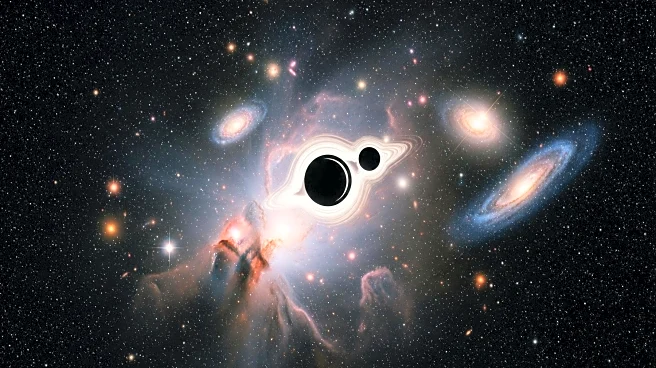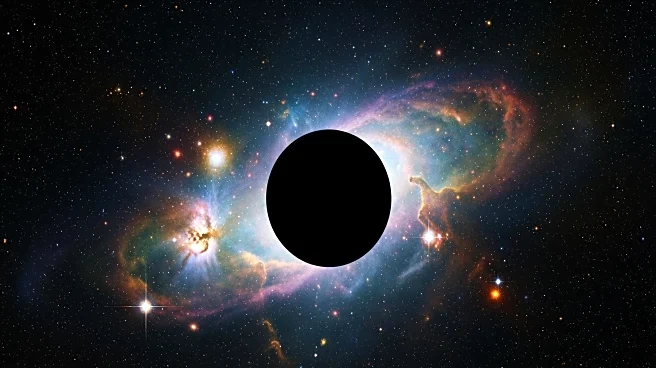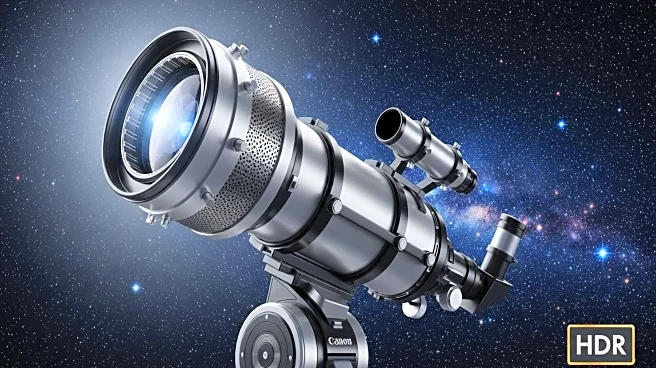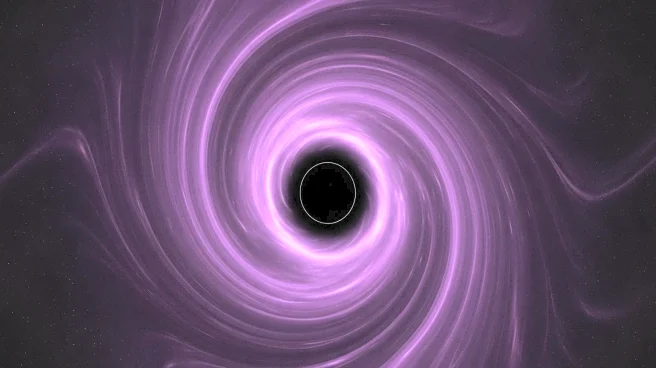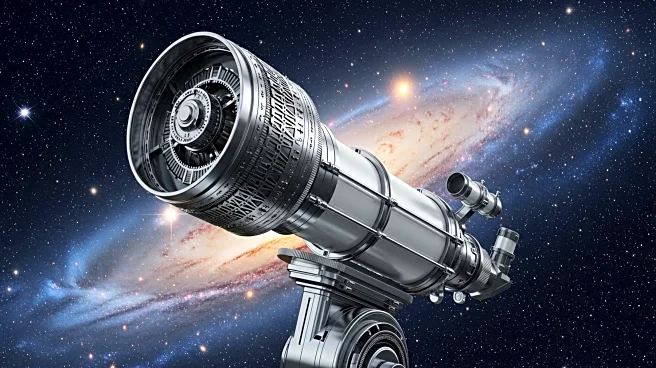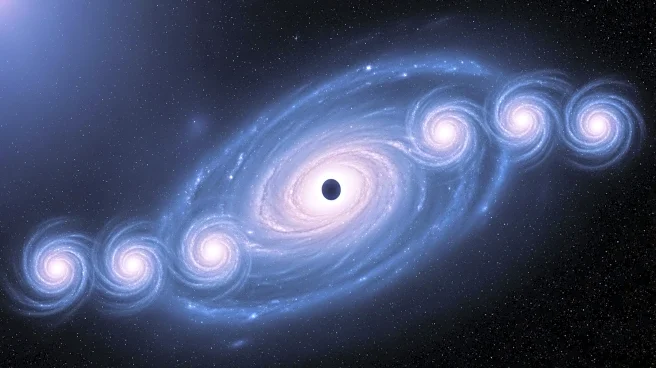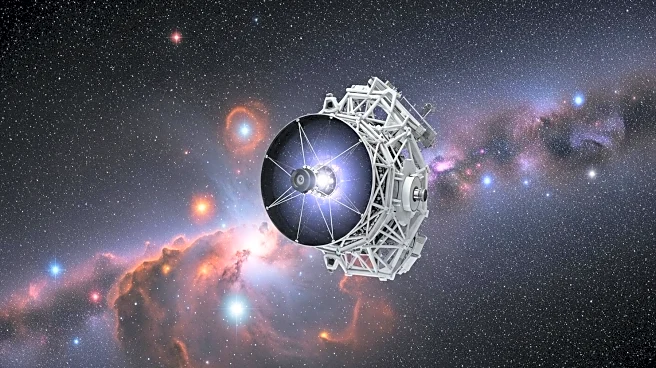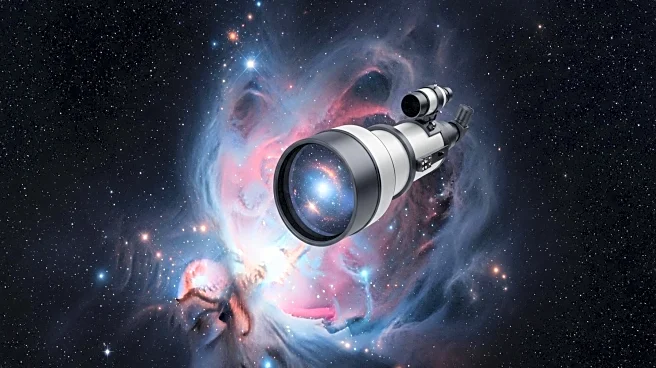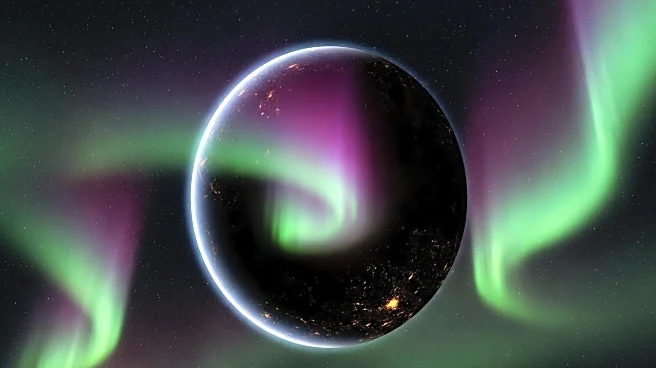What's Happening?
Astrophysicists have proposed a new model to explain mysterious light phenomena observed in the early Universe, suggesting the existence of 'black hole stars.' These objects are theorized to be supermassive black holes enveloped in dense gas clouds, resembling an atmosphere around a stellar core. The model aims to account for the strong Balmer break observed in certain galaxies, which indicates a dominant population of A-type stars. This phenomenon challenges existing theories, as it suggests these galaxies appear older than possible given their epoch, just 600 million years after the Big Bang. The research, led by Anna de Graaff from the Max Planck Institute for Astronomy, posits that these galaxies might be dominated by emission from an active galactic nucleus rather than evolved stellar populations.
Why It's Important?
The proposed black hole star model could significantly impact our understanding of galaxy formation and evolution in the early Universe. If validated, it would provide a new perspective on how supermassive black holes and their surrounding environments contribute to the light spectra of galaxies. This could reshape theories about the timeline of star formation and the development of galactic structures shortly after the Big Bang. The model also offers a potential solution to the puzzle of 'little red dots' (LRDs) that exhibit properties inconsistent with current astrophysical models, potentially leading to breakthroughs in cosmology and astrophysics.
What's Next?
Further research is required to confirm the existence of black hole stars and understand their formation and evolution. The model's plausibility will be tested through simulations and observations, particularly using high-quality spectrophotometric data from instruments like the James Webb Space Telescope (JWST). These efforts aim to refine the model and explore other spectral features that might indicate the presence of black hole stars. The findings could lead to new benchmarks for future studies on active galactic nuclei and the role of black holes in galaxy development.
Beyond the Headlines
The concept of black hole stars introduces intriguing ethical and philosophical questions about the nature of the Universe and our place within it. It challenges the conventional understanding of stellar evolution and the lifecycle of galaxies, potentially altering the narrative of cosmic history. The model also highlights the importance of interdisciplinary collaboration in solving complex astrophysical puzzles, as it combines elements of theoretical physics, observational astronomy, and computational modeling.

